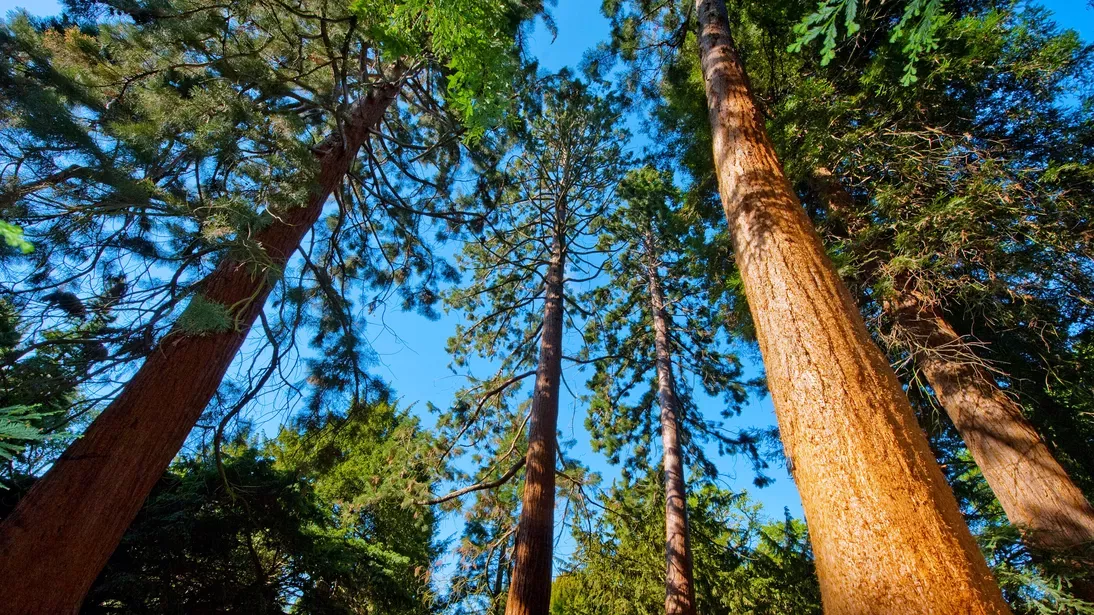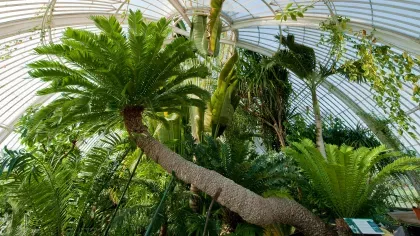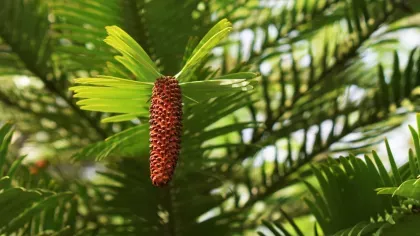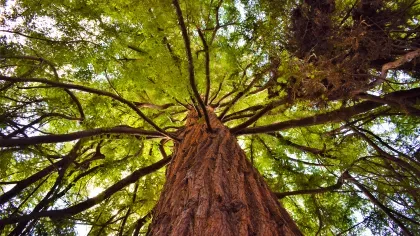29 October 2019
7 reasons to visit our Pinetum
Conifers, rare species, Kew's tallest tree, and much more.

The Pinetum is one of our Gardens’ hidden gems.
Tucked away within the Arboretum on the southernmost edge of Kew, there are many great reasons to pay this enchanting and secluded area a visit.
The spectacular conifers
Our Pinetum spans 40 acres and is home to an incredibly diverse collection of conifer trees.
Kew’s second director, Sir Joseph Hooker, first developed the Pinetum in the 1860s and 70s. At the time, it was the most wide-ranging collection of conifers in the world.
Ancient and magnificent, conifers have existed for over 300 million years.
But what do this group of plants’ 615 species have in common? They are typically evergreen, bear cones and have needle-like or scaly leaves.
Take a stroll through the Pinetum and notice the beauty and variety of all the foliage, cones and colours.
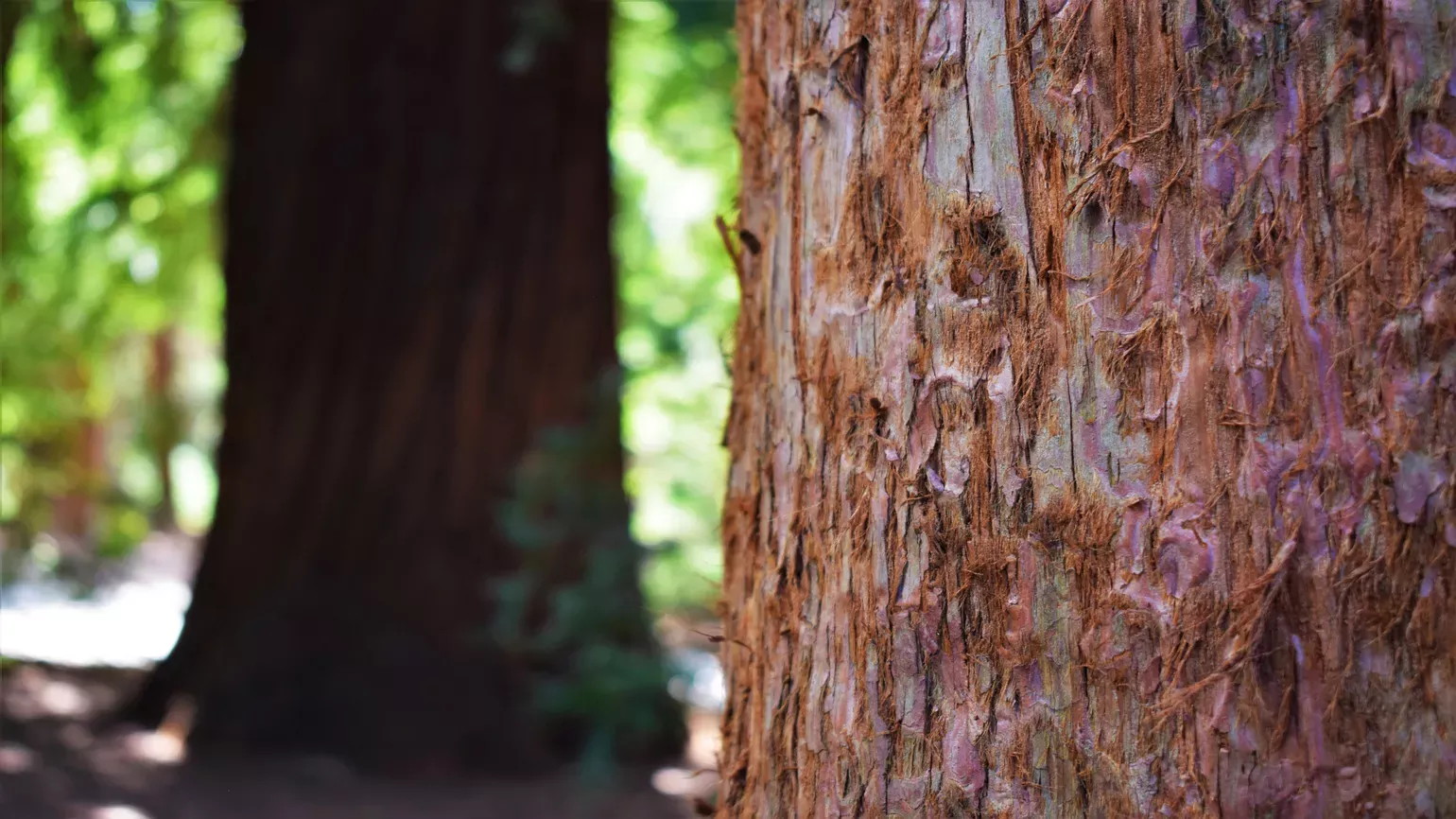
Meet our tallest tree
Redwood Grove within the Pinetum is where the mighty giants live.
Here, you’ll find a mixture of coastal redwoods (Sequoia sempervirens), the tallest living organism in the world, and giant redwoods (Sequoiadendron giganteum), the largest living organism by volume.
Our tallest tree in the entire Gardens grows here.
It’s a towering coastal redwood that stands at 40 metres tall. That’s the same height as a 13-storey building.
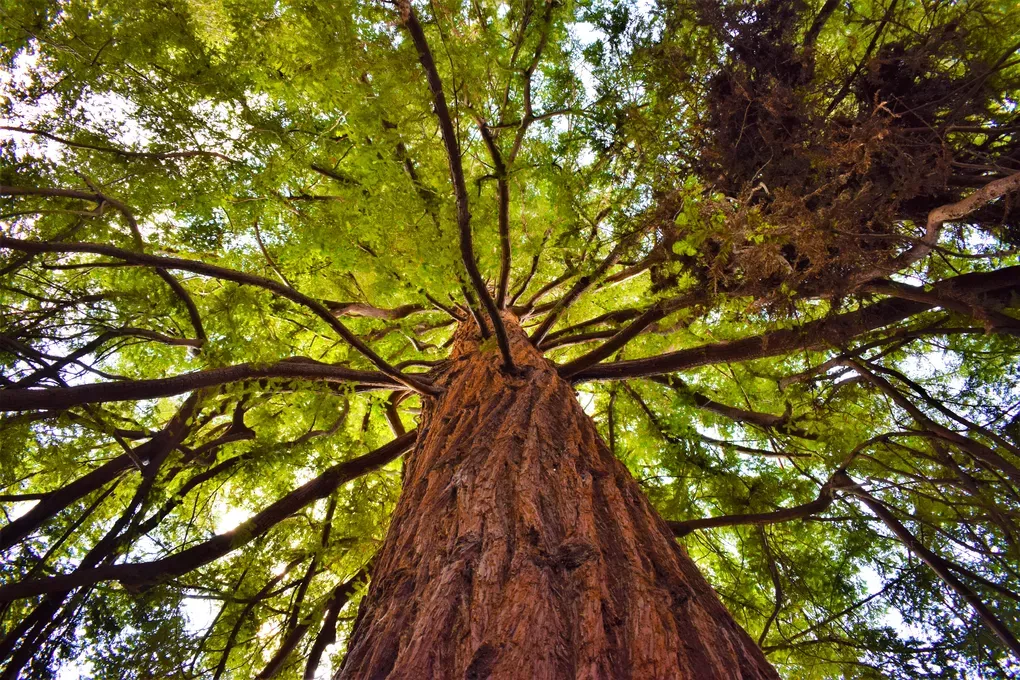
Walk through the ages
In the Pinetum you can journey through different generations of conifers, meeting old, middle-aged and young trees along the way.
Species are displayed in family order and geographically planted.
So, for instance, North American species are separate from plants native to Asia or South America.
Can you find the only three native British conifer species here, common yew (Taxus baccata), common juniper (Juniperus communis) and Scots pine (Pinus sylvestris)?
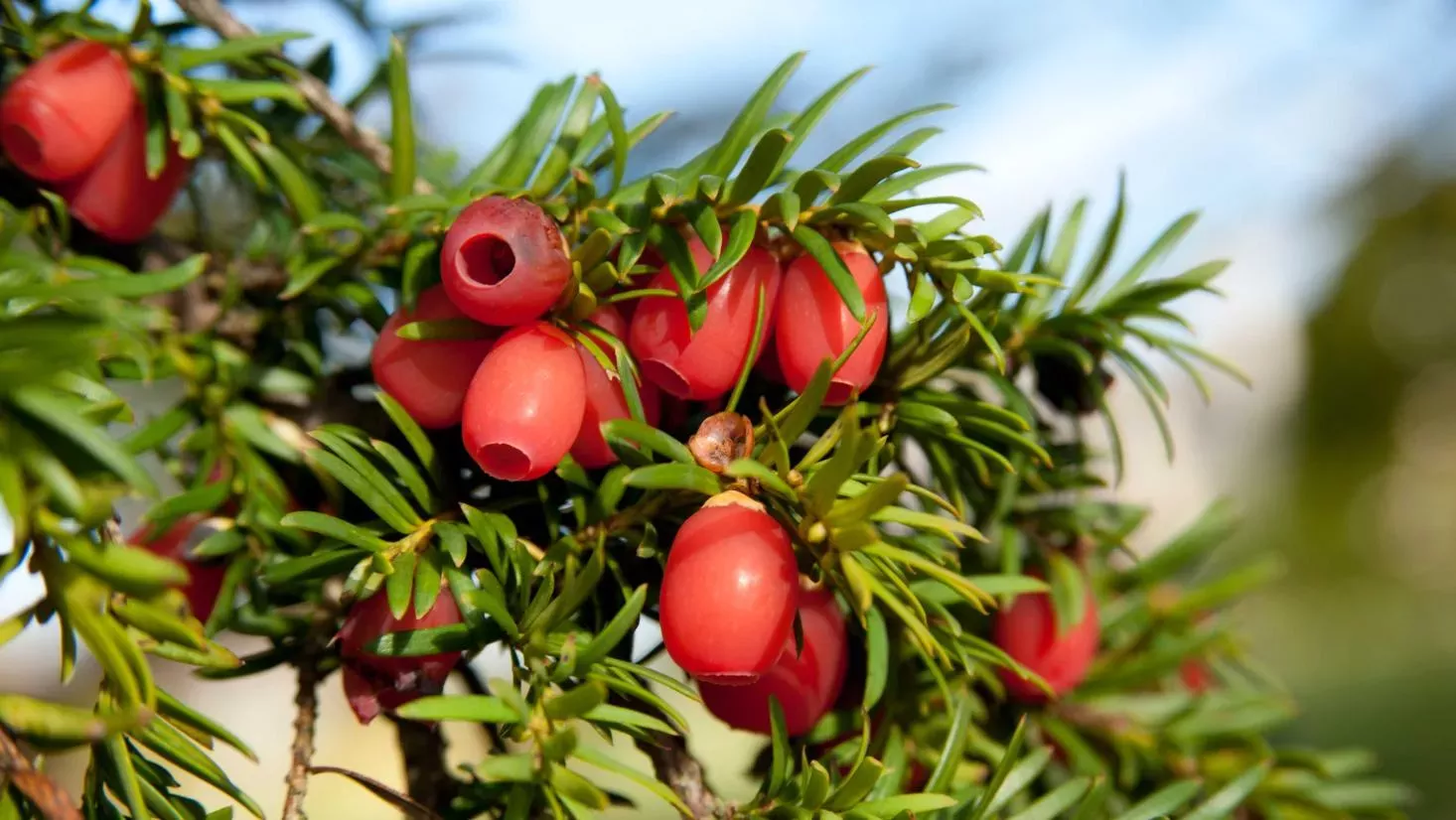
Spot our rare treasures
Our original dawn redwood (Metasequoia glyptostroboides) was planted here in 1948.
But before the 1940s, the species was thought to be extinct until it was rediscovered by botanists in China.
This redwood species, now endangered, is the only member of the genus Metasequoia. It is also a deciduous pine and one of only a small selection of conifers that sheds its leaves.
Look out for Cathaya argyrophylla. It's the only known living species of the Cathaya genus within the pine family, Pinaceae.
Our Japanese Douglas-fir (Pseudotsuga japonica) is a rare specimen and rated as Endangered (E) in the wild, according to IUCN Red List criteria.
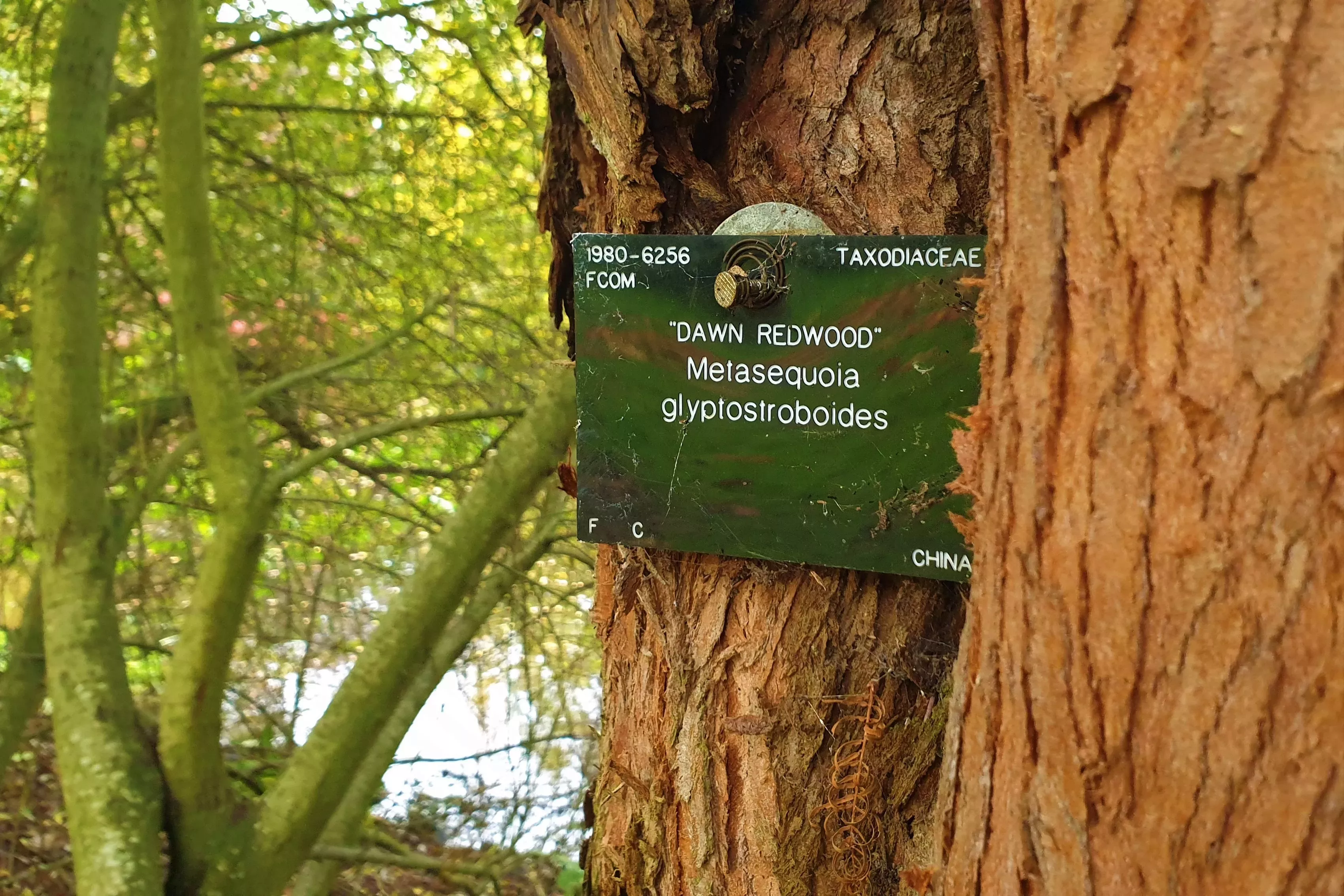
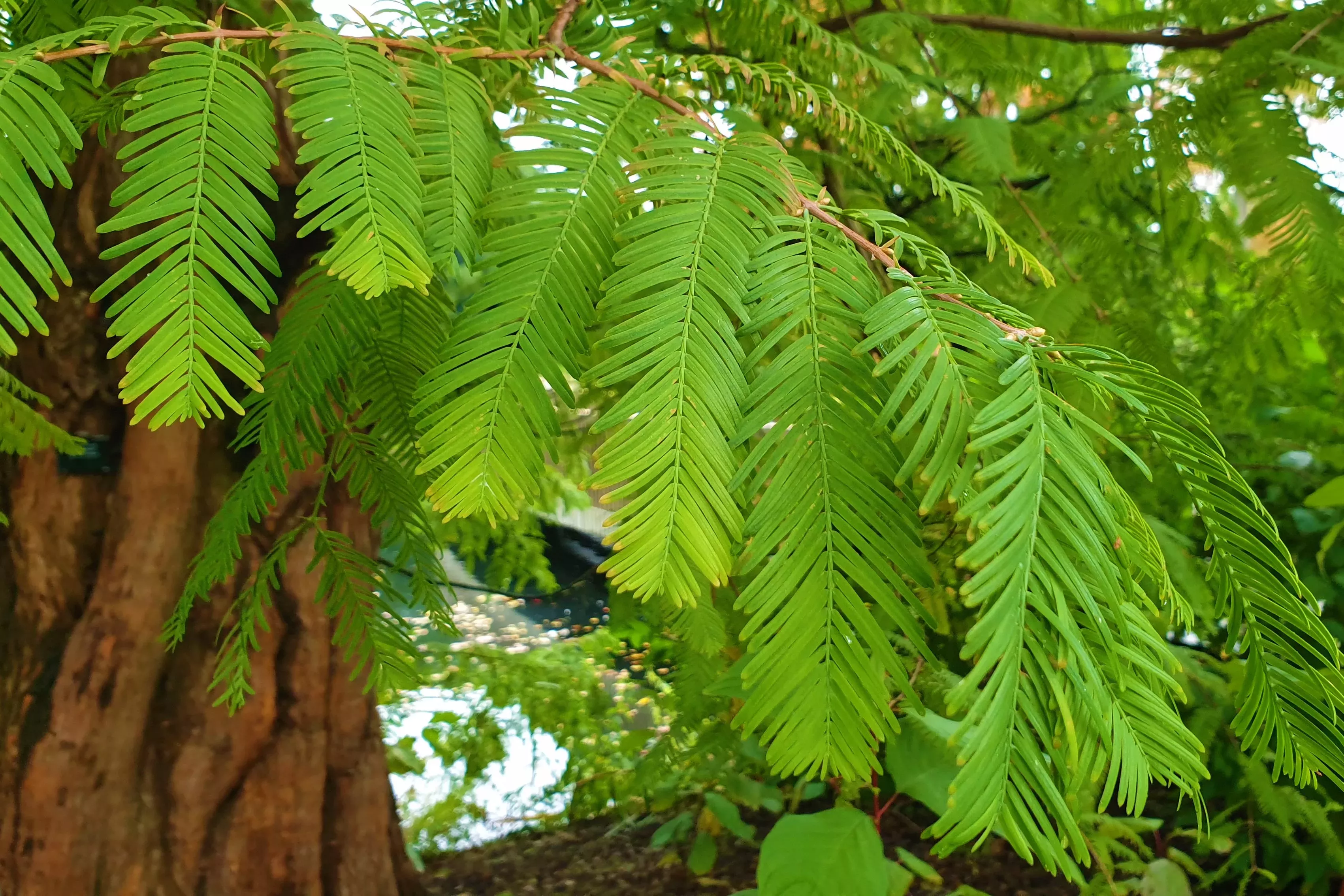
Wollemi pines (Wollemia nobilis) were thought to have become extinct two million years ago.
But in 1994 a small group of these conifers was found growing in the canyons of Wollemi in south-east Australia.
Until then, these pines were only known from fossil records and once formed vast forests in the time of the dinosaurs. Look out for this species in our landscape.
Pushing the boundaries of hardiness, our horticulturists are now trialing growing trees in the Pinetum that are normally grown inside the Temperate House, such as Taiwania and the bunya pine (Araucaria bidwillii).
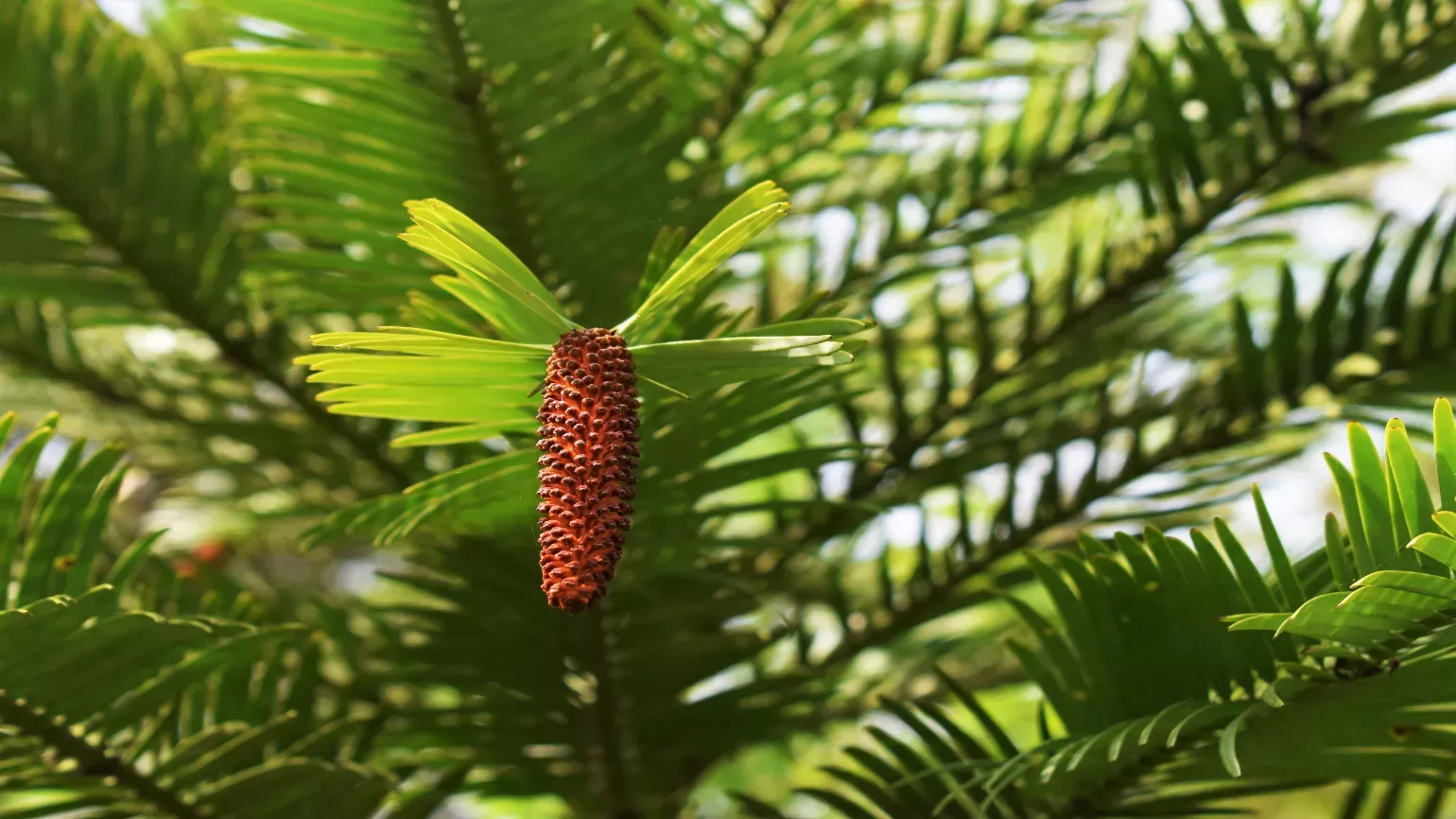
Enjoy the peace and quiet
If you're in need of a breather then head to the Pinetum.
Quieter and more secluded than other areas of the Gardens, you can immerse yourself in nature, meandering through the pines.
Soak up the atmosphere and tranquility.
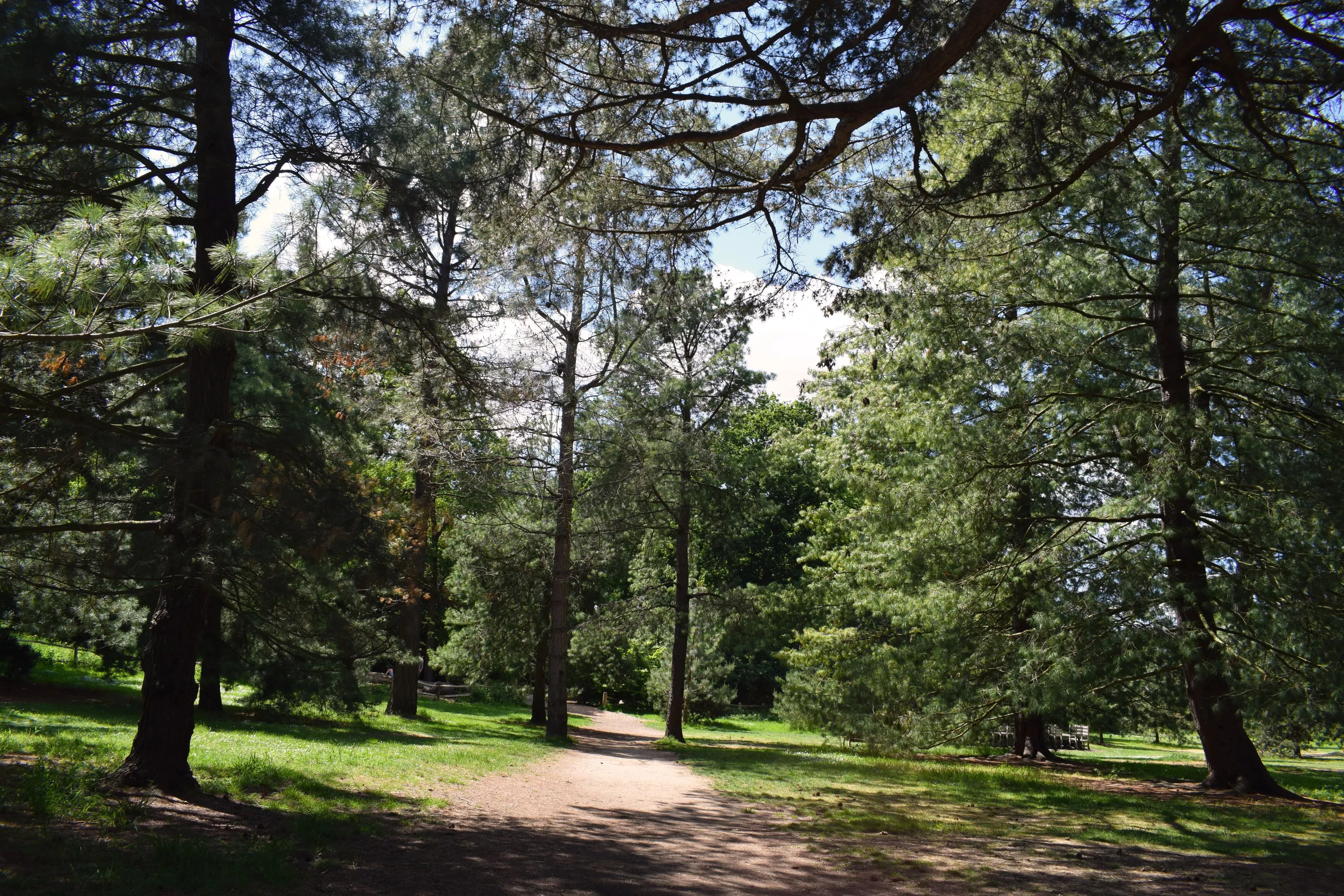
It’s great for all seasons
From spring to winter, this area is full of life and colour.
During the colder months when deciduous trees are standing stark and bare, the Pinetum’s evergreen conifers and bright berries display their beautiful rich hues.
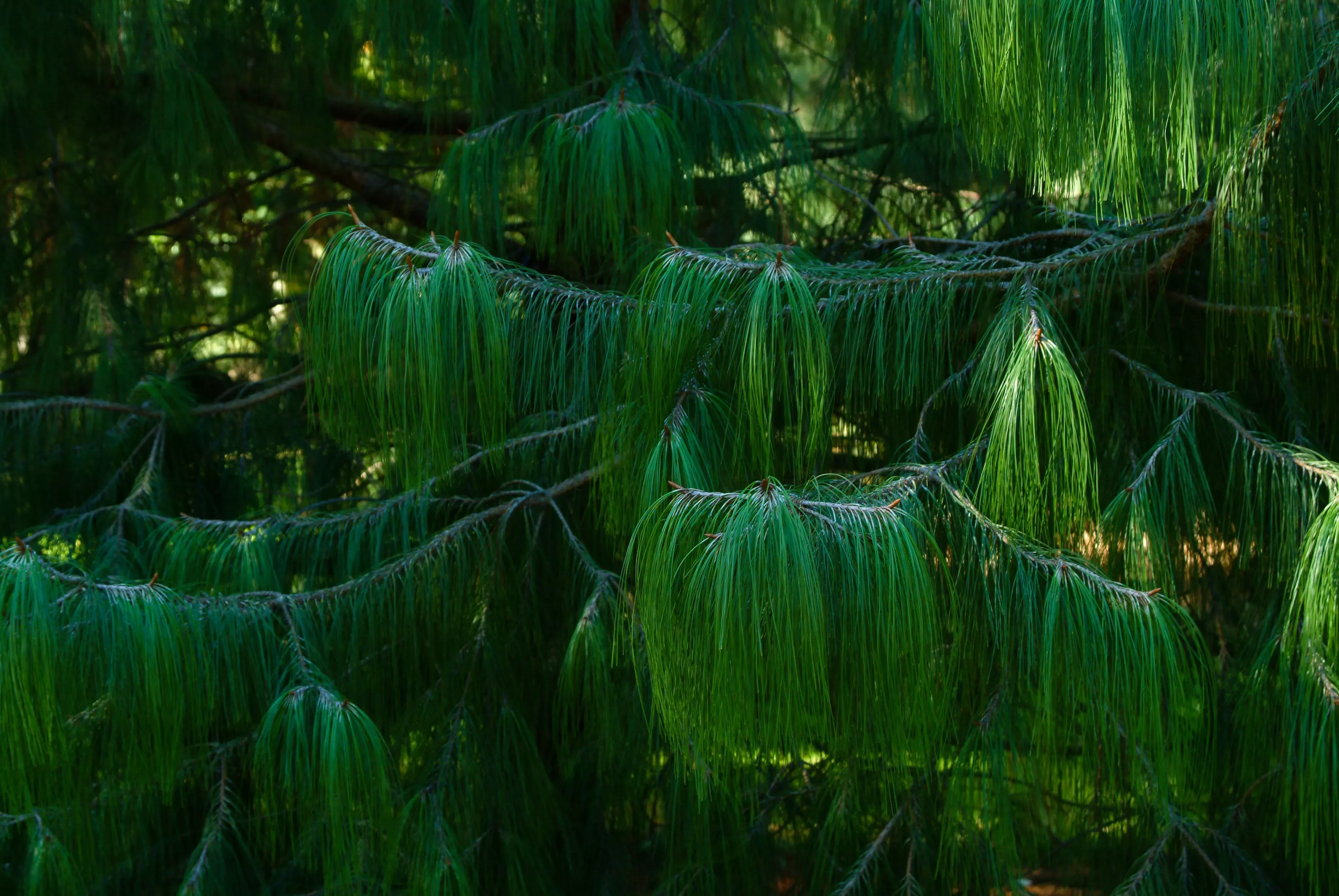
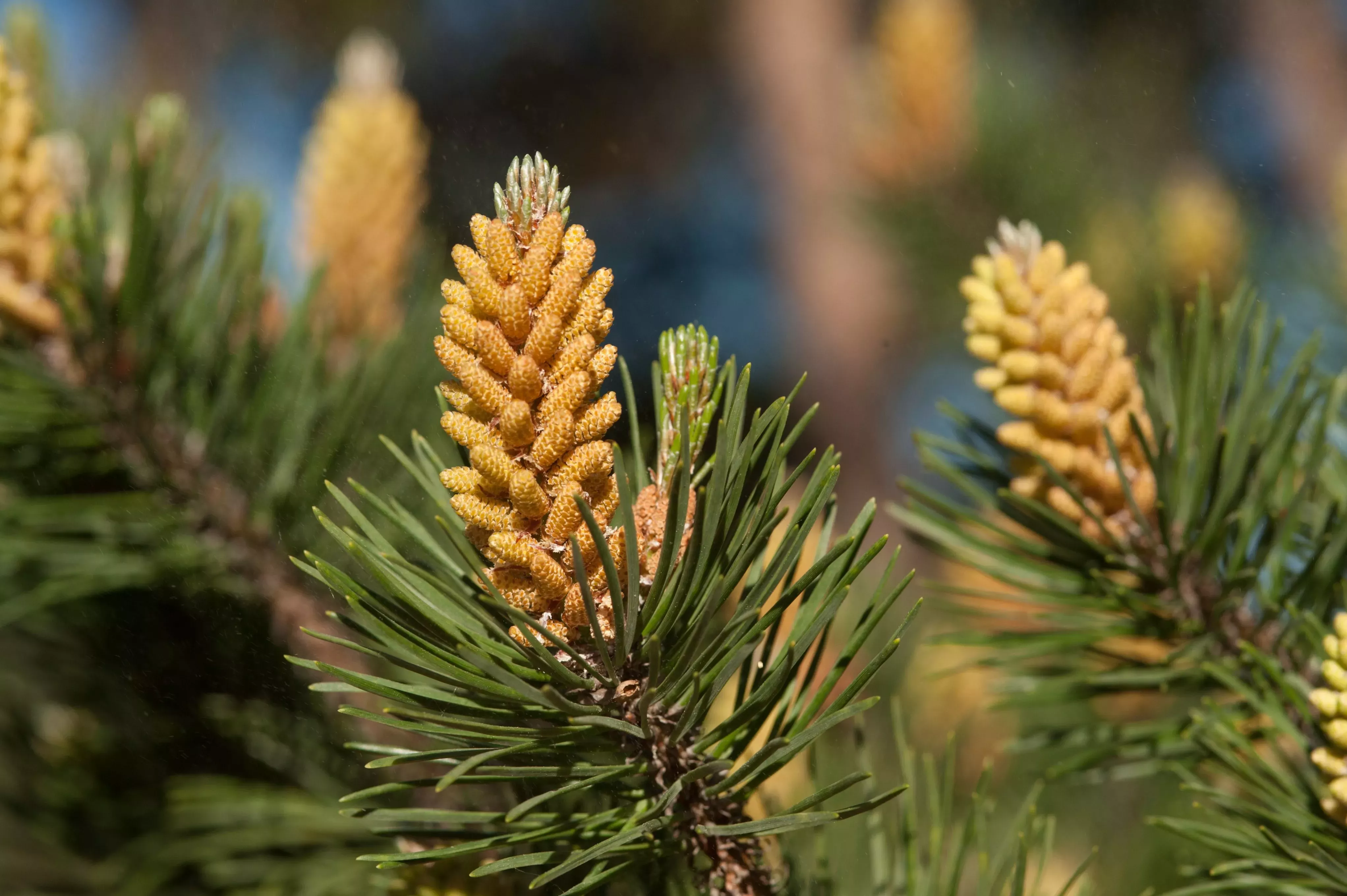
Science stories
Conifers play an important role in scientific work. In fact, the fossilised remains of ancient conifers have helped scientists trace the geological history of the Earth.
Most of the specimens within the Pinetum are wild collected. Around 80% of all the species have been confirmed and verified by a conifer taxonomist.
This classification makes it easier for our scientists to use these plants for their research.
